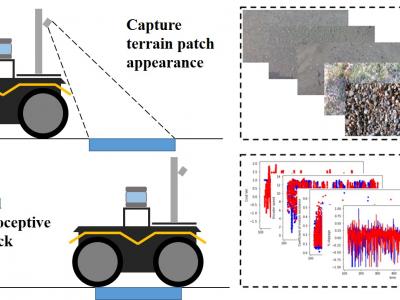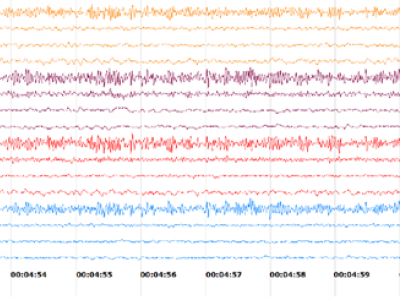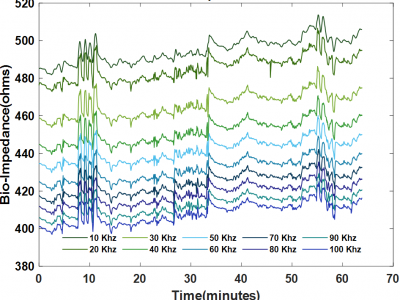Machine Learning
The Jackal UGV, from Clearpath Robotics, was used as the data collecting platform. This skid-steer four-wheel-drive vehicle comes with an onboard IMU, two DC motors with encoders that measure wheel angular speeds, and current sensors that measure motor current outputs. On each side of the robot, the front wheel and back wheel are jointed with a gearbox and so spin together at the same rate and direction. The IMU provided vehicle attitude measurements in terms of Euler angles, as well as linear acceleration and angular rate of the vehicle body in three Euclidean axes.
- Categories:
 1285 Views
1285 ViewsThe data set contains 152 measurements of room impulse responses for direction of arrival estimation, using a compact three-channel microphone array. Sources are placed at 10-degree intervals from -90 to 90 degrees in the azimuth plane at range 150 cm. There are also 5 off-grid measurement positions and 6 off-range positions - at ranges 1 m, 2 m, 2.5 m and 3 m. The measurements are performed in a furnished classroom, which is approximately rectangular and of dimensions 9 x 6 x 3 m. The reverberation time is 0.4 s.
- Categories:
 934 Views
934 Views
The dermoscopic images considered in the paper "Dermoscopic Image Classification with Neural Style Transfer" are available for public download through the ISIC database (https://www.isic-archive.com/#!/topWithHeader/wideContentTop/main). These are 24-bit JPEG images with a typical resolution of 768 × 512 pixels. However, not all the images in the database are in satisfactory condition.
- Categories:
 1667 Views
1667 ViewsThis dataset consists of EEG data of 40 epileptic seizure patients (both male and female) of age from 4 to 80 years. The raw data was collected from Allengers VIRGO EEG machine at Medisys Hospitals, Hyderabad, India. The EEG electrodes were placed according to 10 – 20 International standard. The EEG data was recorded from 16 channels (FP2-F4, F4-C4, C4-P4, P4-O2, FP1-F3, F3-C3, C3-P3, P3-O1, FP2-F8, F8-T4, T4-T6, T6-O2, FP1-F7, F7-T3, T3-T5, and T5-O1) at 256 samples per second.
- Categories:
 11933 Views
11933 ViewsReverse transcription-polymerase chain reaction (RT-PCR) is currently the gold standard in COVID-19 diagnosis. It can, however, take days to provide the diagnosis, and false negative rate is relatively high. Imaging, in particular chest computed tomography (CT), can assist with diagnosis and assessment of this disease. Nevertheless, it is shown that standard dose CT scan gives significant radiation burden to patients, especially those in need of multiple scans.
- Categories:
 3193 Views
3193 ViewsThis dataset is taken from 20 subjects over a duration of 1 hour where experiments were done on the upper body bio-impedance with the following objectives:
a) Evaluate the effect of externally induced perturbance at the SE interface caused by motion, applied pressure, temperature variation and posture change on bio-impedance measurements.
b) Evaluate the degree of distortion due to artefact at multiple frequencies (10kHz-100kHz) in the bio-impedance measurements.
- Categories:
 621 Views
621 ViewsThe AOLAH databases are contributions from Aswan faculty of engineering to help researchers in the field of online handwriting recognition to build a powerful system to recognize Arabic handwritten script. AOLAH stands for Aswan On-Line Arabic Handwritten where “Aswan” is the small beautiful city located at the south of Egypt, “On-Line” means that the databases are collected the same time as they are written, “Arabic” cause these databases are just collected for Arabic characters, and “Handwritten” written by the natural human hand.
- Categories:
 1048 Views
1048 Views






